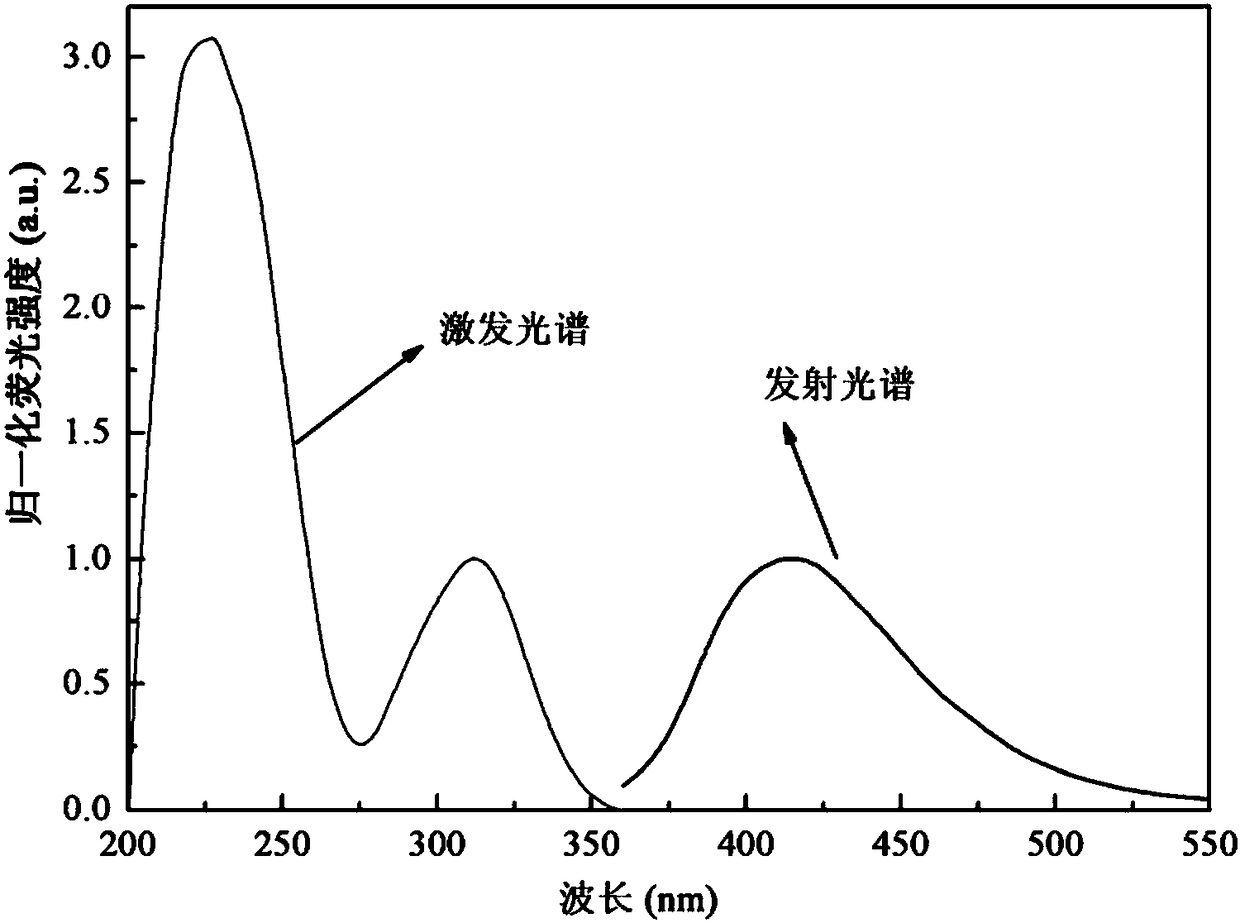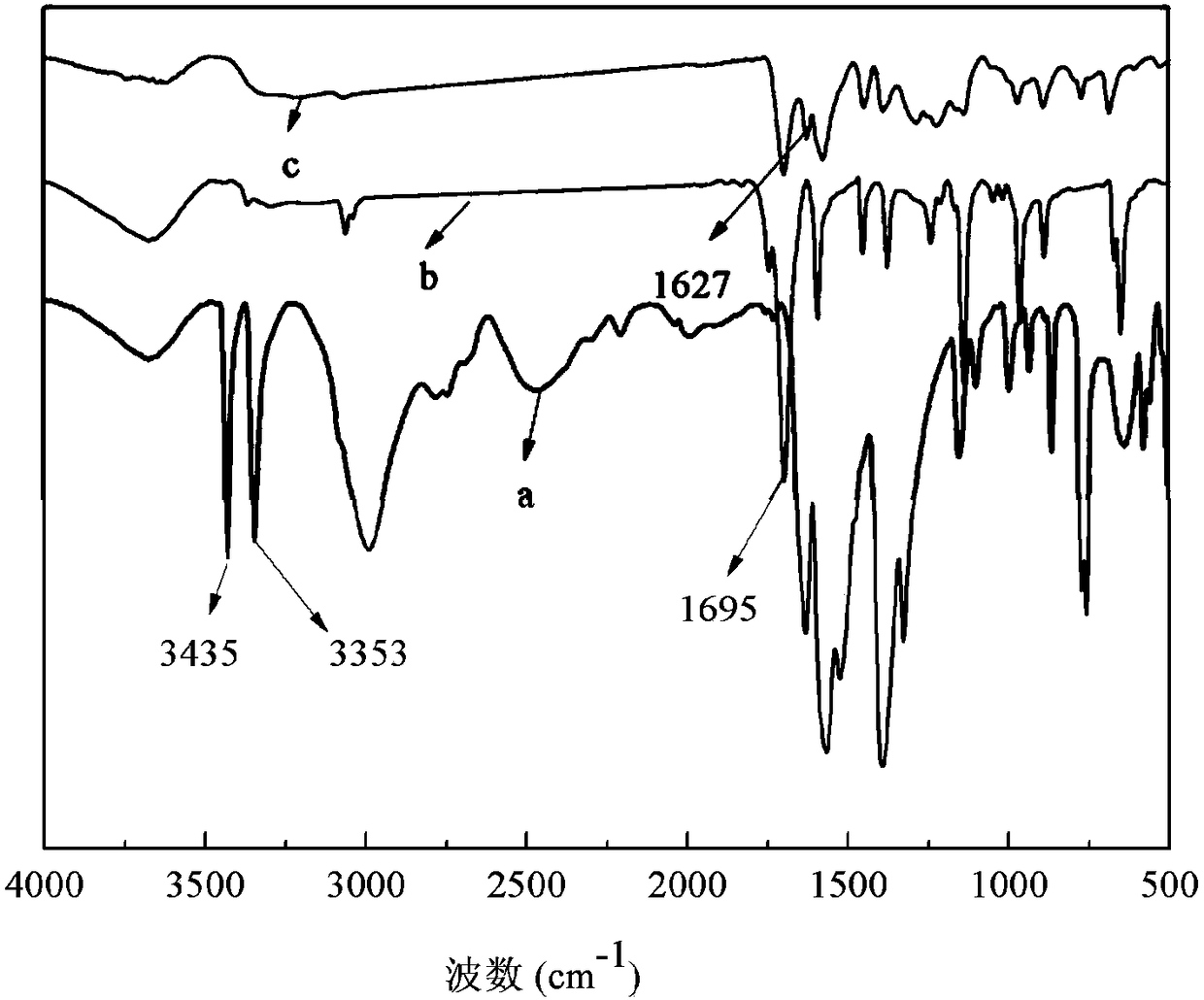Fluorescent nanoparticles based on imine linkers and their application in the detection of hg2+ and acetylcholinesterase
A fluorescent nanoparticle and acetylcholinesterase technology, applied in nanotechnology, nanotechnology, nano-optics, etc., can solve the problems of easy false positive or false negative results, cumbersome sample preparation procedures, large sample background interference, etc., and achieve uniformity Spherical particle size distribution, good thermal stability and high accuracy
- Summary
- Abstract
- Description
- Claims
- Application Information
AI Technical Summary
Problems solved by technology
Method used
Image
Examples
Embodiment 1
[0030] Weigh 48.64g (0.30mmol) of 1,3,5-benzenetricarbaldehyde and 68.47g (0.45mmol) of 3,5-diaminobenzoic acid, dissolve them in 20mL of absolute ethanol, and then dissolve 1,3,5- The ethanol solution of benzenetricarbaldehyde was quickly poured into the ethanol solution of 3,5-diaminobenzoic acid, stirred at room temperature for 30min, then centrifuged at 10000rpm for 5min, washed 3 times with absolute ethanol, and then dissolved in 20mL N,N-di Reflux in methylformamide at room temperature for 4 hours, centrifuge to remove N,N-dimethylformamide, then reflux with absolute ethanol for 2 hours, centrifuge, wash, and vacuum-dry at room temperature for 12 hours to obtain fluorescent nanoparticles based on imine linkages.
[0031] The inventors used PE LS55 fluorescence spectrophotometer, infrared spectrometer, transmission electron microscope, powder X-ray diffractometer, physical adsorption instrument, and thermogravimetric analyzer to characterize the obtained fluorescent nanopa...
Embodiment 2
[0033] In Example 1, the fluorescent nanoparticles based on imine connection are used in the detection of Hg 2+ The application in the specific method is as follows:
[0034] 1. Disperse 0.0034 mg of imine-based fluorescent nanoparticles in 1 mL of ultrapure water to prepare a 3.4 μg / mL fluorescent nanoparticle dispersion; take 50 μL of fluorescent nanoparticle dispersion in a test tube, and then add 100 μL different concentrations of Hg 2+ Aqueous solution, dilute to 250 μL with ultrapure water, and mix evenly so that the Hg in the final mixed solution 2+ The concentrations were 0, 0.08, 0.40, 0.64, 0.80, 1.60, 4.00, 6.40, 8.00, 16.00 and 24.00 μmol / L, and then incubated at room temperature for 30 minutes and shaken evenly, using a PE LS55 fluorescence spectrophotometer (fluorescence conditions: excitation wavelength 313nm, the range of emission spectrum is 340~550nm, the slit width of excitation and emission is 5nm, 10nm respectively) to detect different concentrations of ...
Embodiment 3
[0048] 1. Disperse 0.0034 mg of imine-linked fluorescent nanoparticles in 1 mL of phosphate buffer with a pH value of 7.5 to prepare a 3.4 μg / mL fluorescent nanoparticle dispersion; take 50 μL of fluorescent nanoparticle dispersion in a test tube , followed by adding 50 μL of 100.00 μmol / L Hg 2+ aqueous solution and 50 μL of 100.00 μmol / L iodothioacetylcholine aqueous solution, and 50 μL of acetylcholinesterase aqueous solutions with different activities were added, and 50 μL of phosphate buffer solution with a pH value of 7.5 was used to make up to 250 μL, and mixed evenly to make the mixed solution The activities of acetylcholinesterase in the medium were 0, 1.33, 6.67, 13.33, 33.33, 40.00, 46.67, 53.33mU / mL, and then incubated at room temperature for 30min and shaken evenly, and detected with a PE LS55 fluorescence spectrophotometer (fluorescence conditions: excitation wavelength 313nm, the scope of the emission spectrum is 340~550nm, the slit width of excitation and emissi...
PUM
| Property | Measurement | Unit |
|---|---|---|
| particle diameter | aaaaa | aaaaa |
| specific surface area | aaaaa | aaaaa |
Abstract
Description
Claims
Application Information
 Login to View More
Login to View More - R&D
- Intellectual Property
- Life Sciences
- Materials
- Tech Scout
- Unparalleled Data Quality
- Higher Quality Content
- 60% Fewer Hallucinations
Browse by: Latest US Patents, China's latest patents, Technical Efficacy Thesaurus, Application Domain, Technology Topic, Popular Technical Reports.
© 2025 PatSnap. All rights reserved.Legal|Privacy policy|Modern Slavery Act Transparency Statement|Sitemap|About US| Contact US: help@patsnap.com



